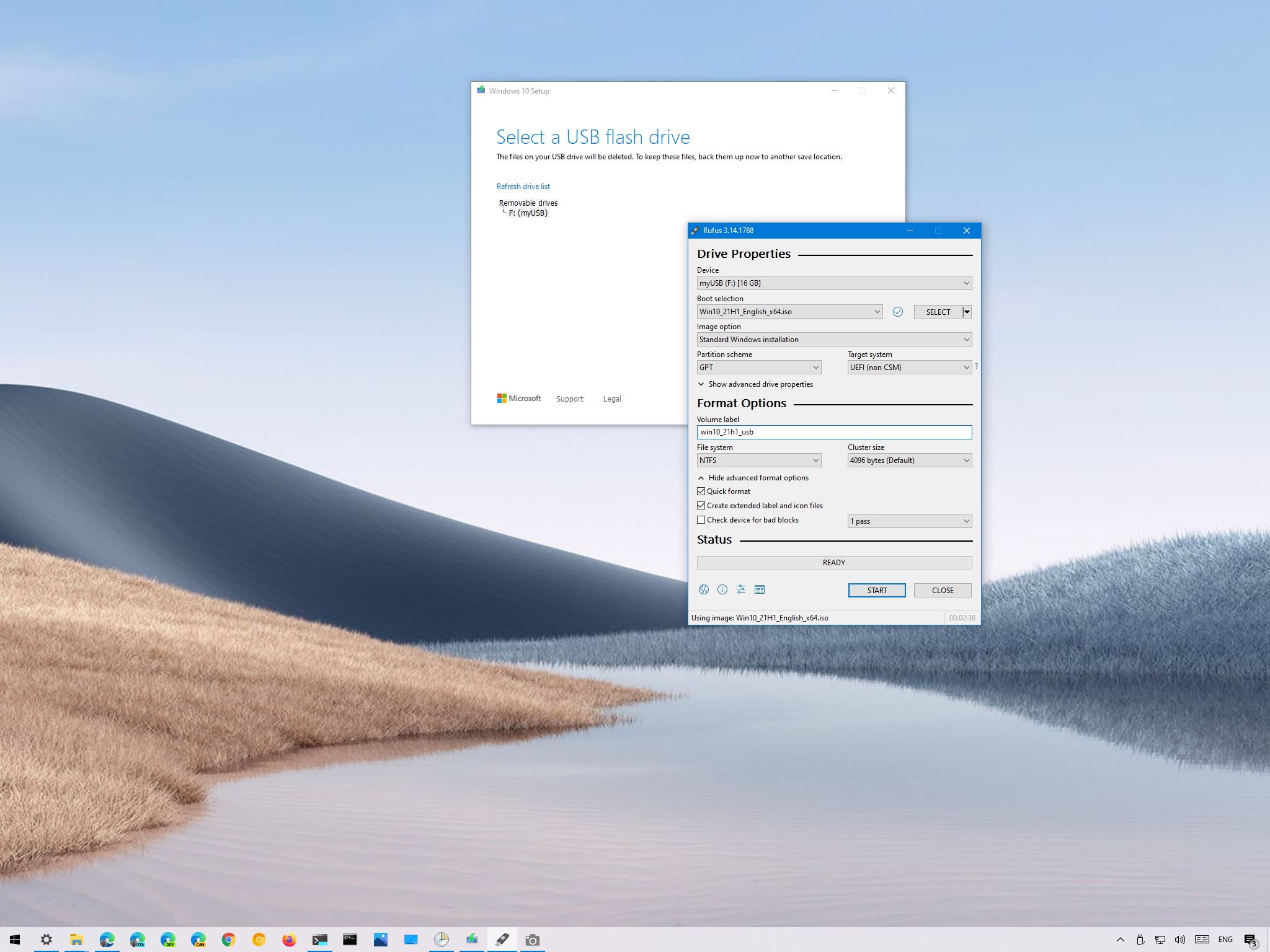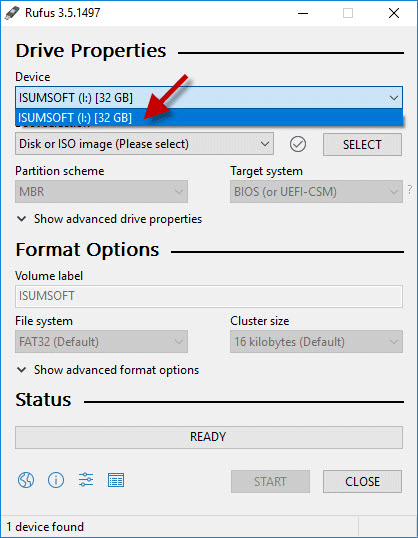
- #Make bootable usb drive windows 10 how to
- #Make bootable usb drive windows 10 64 Bit
- #Make bootable usb drive windows 10 update
- #Make bootable usb drive windows 10 iso
#Make bootable usb drive windows 10 iso
Notes on ISO Support:Īll versions of Rufus since v1.1.0 allow the creation of a bootable USB from an ISO image (.iso).Ĭreating an ISO image from a physical disc or from a set of files is very easy to do however, through the use of a CD burning application, such as the freely available InfraRecorder or CDBurnerXP. In that case, FreeDOS, which is the default selection, is recommended over MS-DOS, as it supports more keyboard layouts. If you create a DOS bootable drive and use a non-US keyboard, Rufus will attempt to select a keyboard layout according to the locale of your system.
#Make bootable usb drive windows 10 64 Bit
Windows 7 or later, 32 or 64 bit doesn't matter. (1)Ī non exhaustive list of Rufus supported ISOs is also provided at the bottom of this page. It is also marginally faster on the creation of Linux bootable USB from ISOs. For instance it's about twice as fast as UNetbootin, Universal USB Installer or Windows 7 USB download tool, on the creation of a Windows 7 USB installation drive from an ISO. you need to flash a BIOS or other firmware from DOSĭespite its small size, Rufus provides everything you need!.you need to work on a system that doesn't have an OS installed.you need to create USB installation media from bootable ISOs (Windows, Linux, UEFI, etc.).It can be especially useful for cases where: You would be much better off using DOSBOX to run old DOS games and other applications.Rufus is a utility that helps format and create bootable USB flash drives, such as USB keys/pendrives, memory sticks, etc. This helps ensure BIOS updates and other low-level operations work properly. You also could use a bootable USB drive to run old DOS applications, but that tends not to work so well. These utilities still use DOS to ensure they have low-level access to the hardware without any other programs interfering or Windows getting in the way.
#Make bootable usb drive windows 10 how to
RELATED: How To Use DOSBox To Run DOS Games and Old Apps Follow any instructions provided in the manufacturer’s documentation to run the application. Once you are in DOS, you can run the program you copied to your USB drive by typing its name at the DOS prompt. If your computer does not automatically boot from the USB drive, you may need to change your boot order or use a boot menu to select the device from which you want to boot. You can now boot into DOS by restarting your computer with the USB drive connected.


RELATED: How to Boot Your Computer From a Disc or USB Drive Copy these files into the root directory of the USB drive after formatting it. For example, you may have a BIOS.BIN and FLASHBIOS.BAT file you need to run in DOS. To actually run these files from DOS, you will need to copy them over to your newly-formatted USB drive.
#Make bootable usb drive windows 10 update
You have probably created this boot drive because you have a DOS-based program to run, such as a BIOS update utility or another low-level system program. The formatting process should be extremely quick-usually a matter of seconds-but it can take longer depending on the size of your USB drive. Select the “Create a bootable disk using” option and then choose “FreeDOS” from the dropdown menu next to that option.Ĭlick the “Start” button to format the disk and copy the files necessary to boot into FreeDOS. The DOS option requires FAT32 and isn’t available for the other file system options like NTFS, UDF, and exFAT. RELATED: What's the Difference Between FAT32, exFAT, and NTFS?įrom the “File System” dropdown menu, choose the “FAT32” format. Note that this process will erase the contents of your USB drive, so make sure you’ve backed up any important files on the USB drive first. First, connect your USB drive to the computer and select it in the “Device” dropdown menu.

Creating a DOS-bootable USB drive in Rufus is simple.


 0 kommentar(er)
0 kommentar(er)
